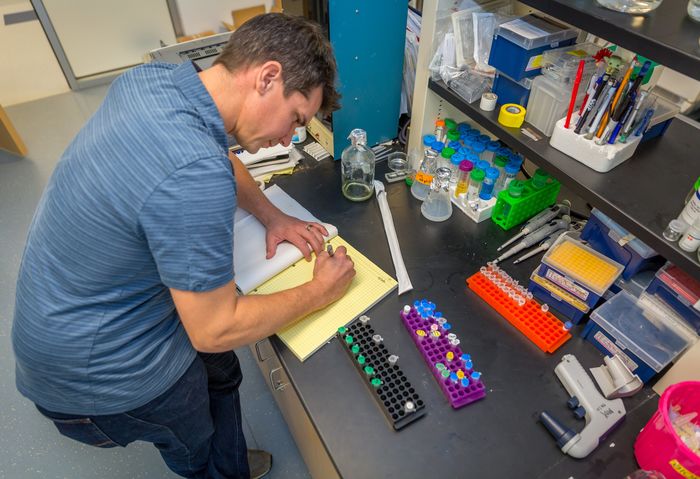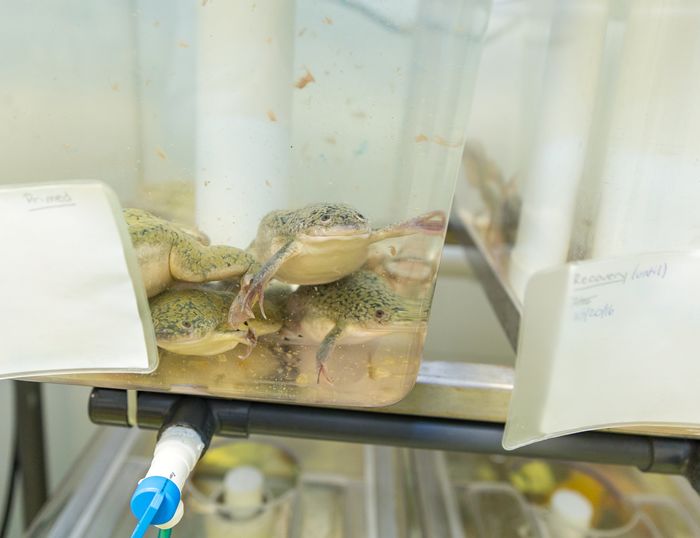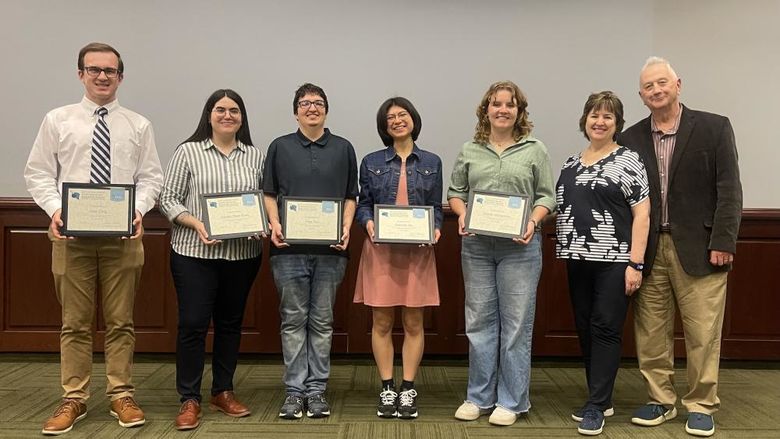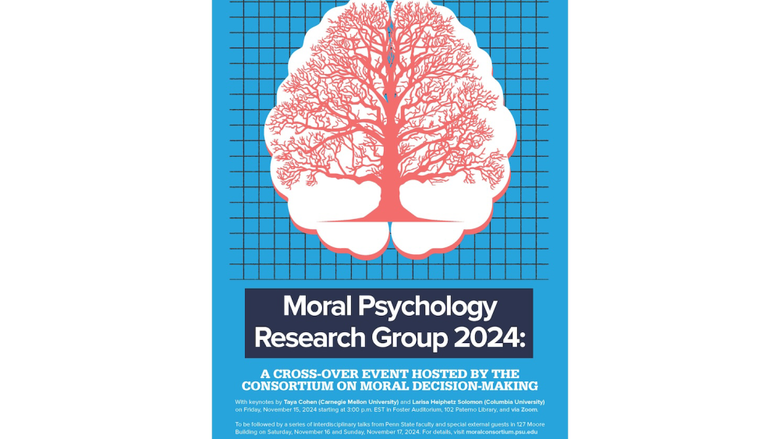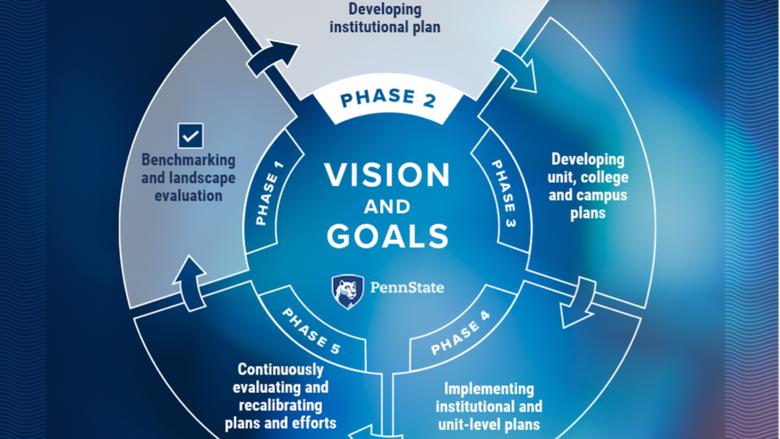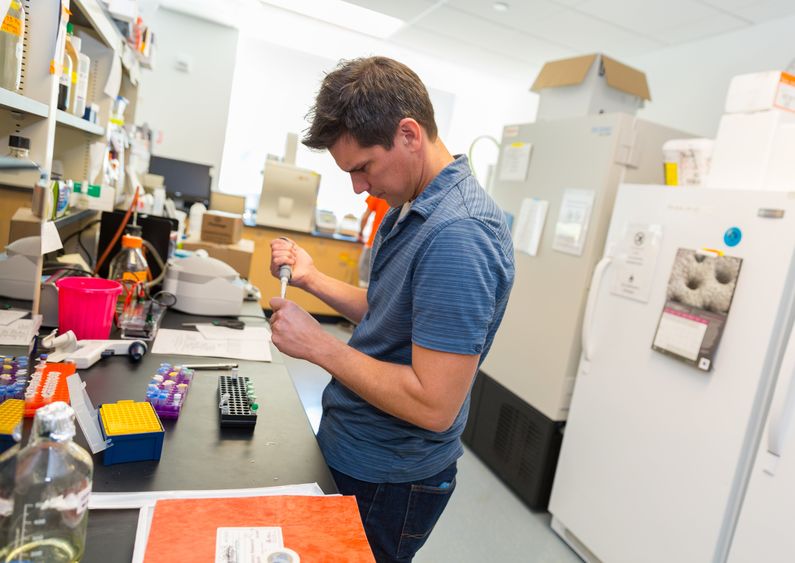
Mick Yoder, assistant professor of biology at Penn State Brandywine.
Mick Yoder, assistant professor of biology at Penn State Brandywine, is using a colony of frogs to study cell behavior in embryonic development.
The project stems from a long-term interest in early cell development, which became a focus of Yoder’s research while he was still a graduate student.
“In graduate school, I worked on a mouse model trying to understand neural tube defects—how the spinal cord forms, gets patterned and closes,” said Yoder. “I ended up strengthening those skills after grad school as a post-doctoral researcher at the University of Virginia. I’ve always been interested in cell-to-cell interactions, so I really lucked out to begin my research in a lab that had a foot in that door.”
Today, Yoder’s own research focuses on mesoderm, a group of embryonic cells that eventually gives rise to muscle, bone, kidneys, blood cells, connective tissue, and other tissues. During embryonic development the mesoderm divides into two populations, yielding midline structures such as the notochord and repeated lateral structures such as somites. He studies a specific protein involved in that process, axial protocadherin, to better understand how cells move and form structures.
“In embryonic development, you start out with one fertilized cell, which divides to create tens of thousands of cells. Then those cells have to rearrange to start forming tissues,” said Yoder. “My research seeks to understand how cells in the early stages of development make decisions to go to different tissues.”
To study this cell behavior, Yoder maintains a colony of African clawed frogs (Xenopus laevis) in his lab and collects eggs from the females. The eggs are fertilized externally, and the resulting embryos are manipulated during development. Although he has worked on a mouse model before, Yoder finds that frogs are more convenient for his current research.
“The eggs of a frog develop in a petri dish, so you can watch development as it is happening,” he said. “You can’t do that with mice because mouse development occurs in utero.”
According to Yoder, a frog embryo can also be manipulated in real time, giving the observer an opportunity to see firsthand how different genetic situations affect cell growth.
“You can introduce or get rid of RNAs and proteins at the single-cell level,” he said. “You can make the embryo develop as if it has a genetic defect. You can isolate a piece of tissue as well, which lets you look at a specific structure as it is forming.”
Yoder is currently using frog embryos to identify developmental protein interactions. “Proteins never work by themselves,” he said, “so you have to figure out what they’re interacting with.” By using a technique called a screen, Yoder was able to identify a host of potential interactive proteins this summer. He next plans to “determine what percentage of those proteins are legitimately interacting and what their relationships are.”
Cellular research such as Yoder’s can be applied to a number of scientific and medical studies. Yoder cites cancer research as one such field.
“My interest is in how the cells of the early embryo are being instructed, which isn’t limited to early development, as it can be applied to all developmental stages. If you understand how cells interact, you get a better handle on the formation of tissues and organs.”
“Additionally, this information can be used to better understand cancerous phenotypes. Cancer cells are constantly changing identity,” said Yoder. “We can get a better understanding of metastasis in cancers if we can figure out how cells adopt their identities to begin with.”
